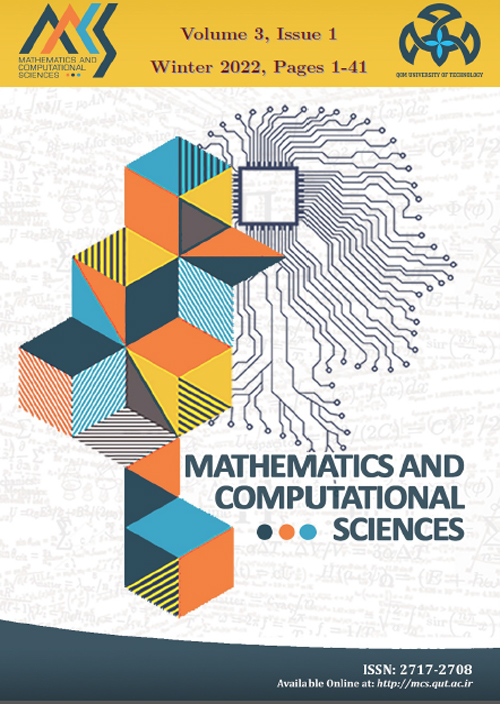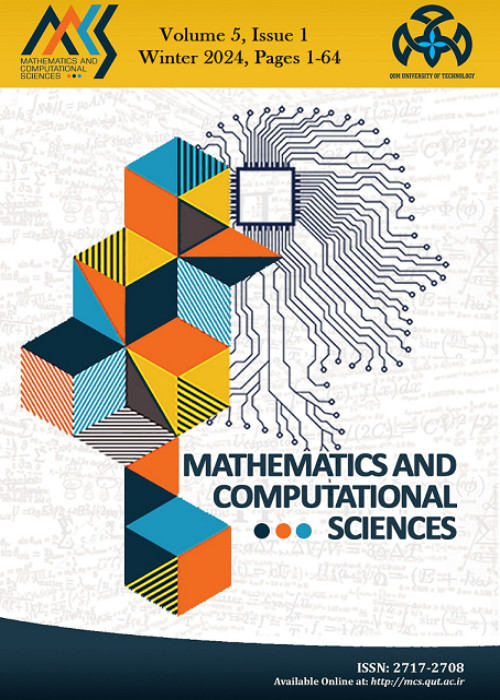فهرست مطالب

Mathematics and Computational Sciences
Volume:3 Issue: 1, Winter 2022
- تاریخ انتشار: 1400/11/17
- تعداد عناوین: 6
-
-
Pages 1-9The rabies virus usually transmits either from animal to man or animal to animal or human to human as the case may be but the major transmitters of the virus are dogs globally. In this work, an integer order SEIR epidemic model was formulated to quantify and give an insight into the spread of rabies within the dog population. The integer order model was studied qualitatively and its results were obtained theoretically before it was modified into the non-integer order counterpart to cater for the data agreement deficiency associated with the integer order epidemic models. As rabies prevalence varies from localities to localities, the theoretical outcomes of the analysis could reveal the genuine picture of rabies dynamics in a particular locality if the actual rabies data of the locality is available.Keywords: Rabies, Integer order, model, Fractional-order
-
Pages 10-16In this paper, we investigate frames and g-frames and show that constructs the direct sum of frames for a finite number of frames. also, We show under what condition it becomes g-frames to T *−g-frames. Finally, we generalize Sun ’s theorem to Parseval frames.Keywords: Frame, Frame operator, G-Frame, Hilbert space
-
Pages 17-24This manuscript presents a developed fourth-order iterative familyof methods for determining the zero of nonlinear equations that isoptimal in line with Kung-Traub conjecture. The family of methodswas constructed by using weight function technique. One iterationcycle of any concrete member of the family of methods requires theevaluation of three functions. Consequently, the efficiency index of anyconcrete member of the family is 1.5873. The method convergenceanalysis was carried out via the Taylor series technique and numericalexamples are provided to illustrate its performance as compared withits contemporary existing methods for obtaining the zero of nonlinearequation.Keywords: Nonlinear equation, Weight function, Optimal order of con- vergence
-
Pages 25-32Equine Infectious Anemia Virus (EIAV) is a retrovirus that establishes a persistentinfection in horses and ponies . The virus is characterized by acute and chronic recurringclinical signs including fever, anemia, edema and cachexia in some animals. The virus is in thesame lentivirus subgroup that includes human immunodeficiency virus (HIV). The similaritiesbetween these two viruses make the study of the immune response to EIAV make it relevant tothe research on HIV. In this paper, a modification of the homotopy perturbation method isapplied to solve a mathematical model of within-host EIAV infection dynamics which containboth humoral and cell-mediated immune. This model is a nonlinear ordinary differentialequations. Example is provided to show the ability and reliability of the method. The resultsreveal that the method is very effective and simple.Keywords: Modified homotopy perturbation method, Equine Infectious Anemia Virus, Nonlinear ordinary differential equations
-
Pages 33-36Schur proved that if the center of a group G has finite index, then the derived subgroup G′ is also finite. Moneyhun proved that if L is a Lie algebra such that dim(L/Z(L)) = n, then dim(L^2) ≤1/2n(n-1) In this paper, we extend the converse of Moneyhun’s theorem. Also, we prove a wellknown result of nilpotent Lie algebras by using a different techniqueKeywords: Nilpotent Lie algebra, Derived subalgebra, Frattini subalgebra
-
Pages 37-41The paper investigates a number of incomplete exact roots of a series of natural numbers, in relation to the Pythagorean theorem that in a right-angled triangle the square of the hypotenuse is equal to the sum of the squares of the legs. It uses the fact that the equation x^2+y^2=z^n,n=2,3,4,.. always has an solution (x,y,z) in integer numbers x,y,z∈Z={0,±1,±2,…}.Keywords: Incomplete square, Pythagorean theorem, Solution in integer numbers


